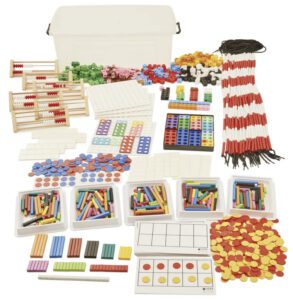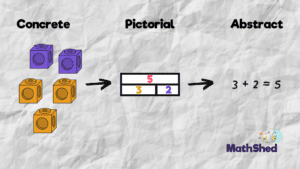At Plumtree we follow a personalised, adapted version of the White Rose maths schemes of learning to meet our children’s learning needs. Follow this link to the white rose website which gives details on what children will know in each topic. Mastery in math consists of three part: Fluency, Reasoning and Problem Solving.
Fluency
Fluency is the part of the lesson where we try to get to grips with the concept. How do we do that skill? How does division work? What is happening to the numbers? We use three parts to this too. These are called Concrete, Pictorial and Abstract.



